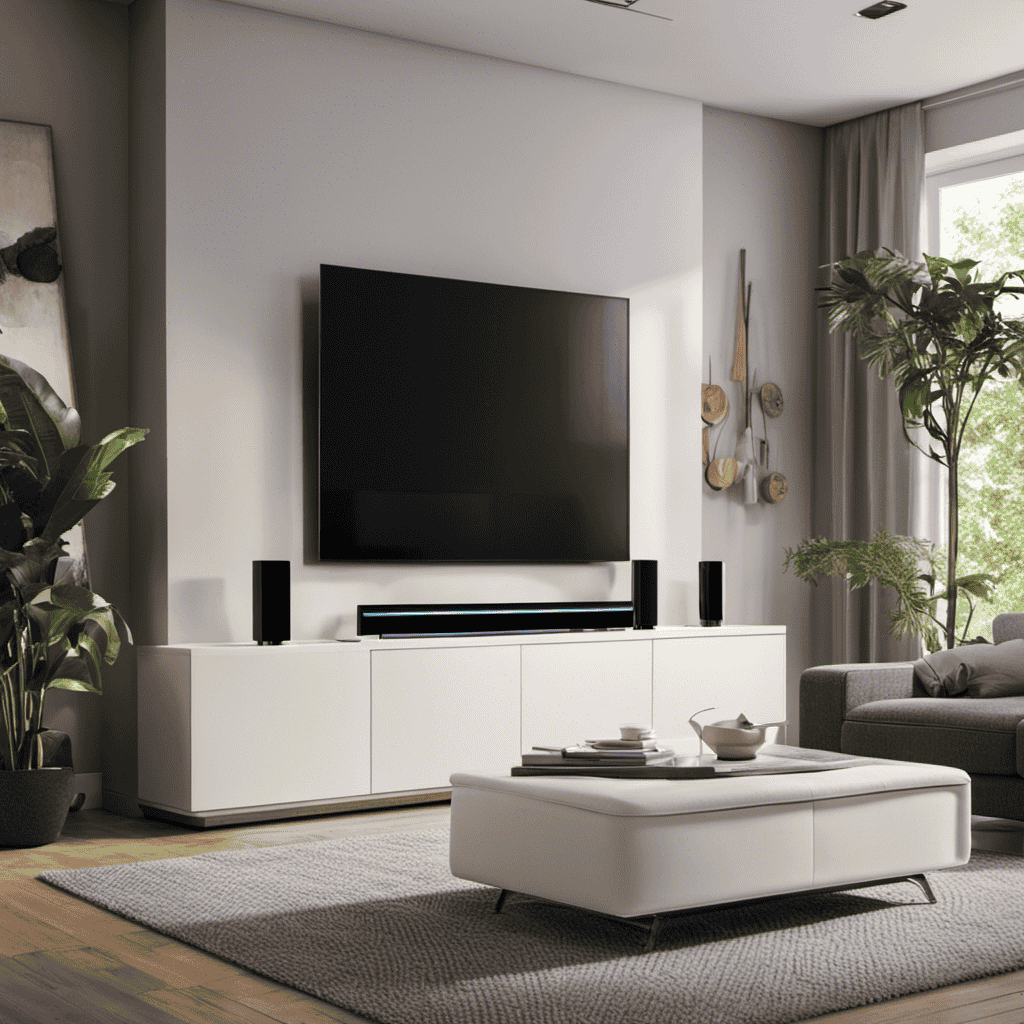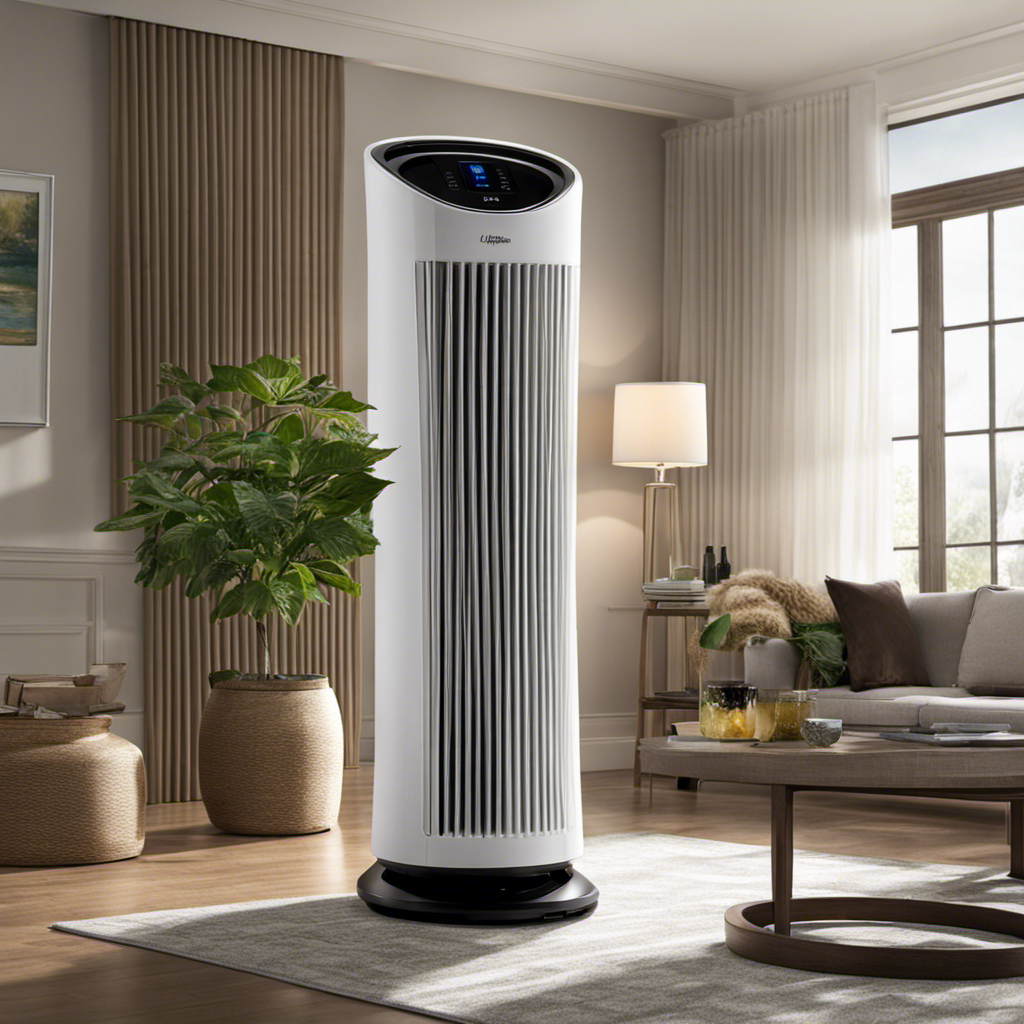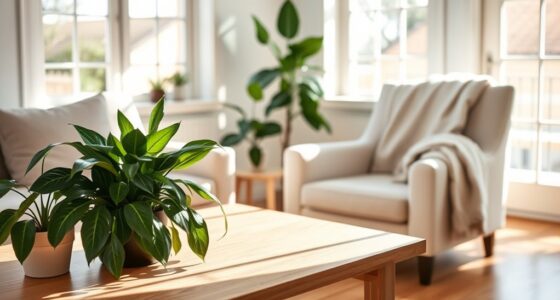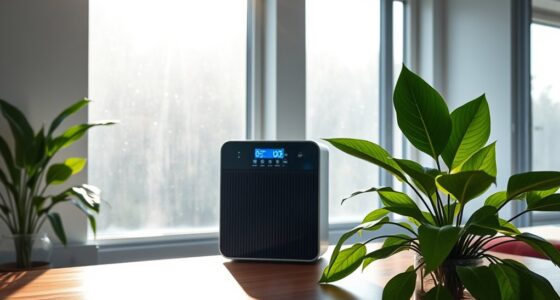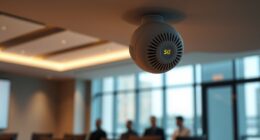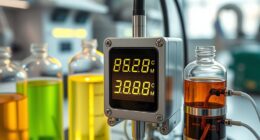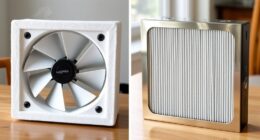As someone who frequently uses air purifiers, I am constantly bothered by the loud noise they generate. It feels like a small tornado has made its home in my living room.
This article delves into the various causes behind the seemingly relentless racket of air purifiers. By examining factors such as fan noise, motor malfunctions, filter maintenance, and airflow, we aim to shed light on why these devices can be as disruptive as they are beneficial.
Additionally, we will explore practical tips for minimizing the noise and maximizing the peace in our homes.
Key Takeaways
- Dirty or clogged filters restrict airflow and cause the fan to work harder, resulting in more noise.
- Motor speed directly affects fan noise, with higher speeds producing louder noise levels.
- Motor malfunctions such as worn-out bearings or damaged fan blades can lead to increased noise levels.
- Regular filter cleaning and replacement, as well as proper maintenance of the motor, can help reduce noise in air purifiers.
Common Causes of Noisy Air Purifiers
One of the most common causes of noisy air purifiers is a dirty or clogged filter. When the filter becomes dirty, it restricts the flow of air through the purifier, causing the fan to work harder and generate more noise.
To prevent this issue, it’s crucial to regularly clean or replace the filter according to the manufacturer’s instructions.
Another factor that can contribute to noise is the fan speed. Higher fan speeds generally produce more noise due to the increased airflow. Understanding the fan speed settings and adjusting them accordingly can help minimize noise levels while still maintaining optimal air purification.
Additionally, noise reduction techniques such as sound insulation materials or placing the purifier on a stable surface can effectively reduce unwanted noise.
Understanding Fan Noise in Air Purifiers
To better understand the fan noise in air purifiers, it’s helpful to consider factors such as motor speed and blade design. The motor noise is directly related to the fan speed, with higher speeds generally resulting in louder noise levels. Additionally, the design of the fan blades can impact the noise produced. Blades with a more streamlined shape and optimized pitch can reduce turbulence and minimize noise. Other factors that contribute to fan noise include the quality of the motor bearings, the presence of vibration dampening mechanisms, and the overall construction of the air purifier housing.
By taking all these factors into account, manufacturers can create air purifiers that deliver effective purification while minimizing fan noise.
Transitioning into the subsequent section about ‘motor malfunctions and noise levels’, it’s important to note that even with proper design and maintenance, motors can sometimes malfunction, leading to increased noise levels.
Motor Malfunctions and Noise Levels
When motors malfunction, the noise levels can become noticeably louder. Motor malfunction effects vary depending on the specific issue, but common problems include worn-out bearings, loose components, or damaged fan blades. These issues can lead to excessive vibrations and increased noise levels.
To minimize the noise caused by motor malfunctions, several noise reduction methods can be implemented. One approach is to use vibration isolators or dampeners to absorb and reduce the vibrations produced by the malfunctioning motor.
Additionally, regular maintenance and inspection of the motor can help identify and address any potential issues before they escalate and cause increased noise levels.
Lastly, replacing worn-out or damaged components, such as fan blades or bearings, can also help restore the motor’s functionality and reduce noise.
How Filter Maintenance Affects Noise Levels
Dirty filters can significantly increase the noise levels of an air purifier. When the filter becomes clogged with dust and debris, it obstructs the airflow, forcing the motor to work harder and produce more noise.
Regular filter cleaning is crucial to maintain optimal performance and reduce noise levels in the long run. Additionally, replacing the filter when necessary can further minimize noise by ensuring proper air circulation and preventing the motor from overworking.
Dirty Filters Increase Noise
You can reduce the noise of your air purifier by cleaning or replacing the filters regularly. Dirty filters can cause the fan speed to increase, leading to louder operation.
Here are some noise reduction techniques to consider:
- Clean or replace filters every 3-6 months to maintain optimal performance.
- Use high-quality filters that are specifically designed for noise reduction.
- Place the air purifier on a stable surface to minimize vibrations and rattling sounds.
- Keep the air purifier away from walls or other objects that may obstruct airflow.
- Consider using a lower fan speed setting, as higher speeds tend to generate more noise.
Regular Filter Cleaning
To maintain optimal performance, it’s important to regularly clean or replace your air purifier filters. This is especially crucial for reducing noise levels and ensuring a quieter operation.
When the filters become dirty or clogged, the fan has to work harder to draw in air, resulting in increased noise. By regularly cleaning the filters, you can prevent this buildup and maintain efficient airflow.
Start by turning off the purifier and removing the filters. Use a vacuum cleaner or a soft brush to gently remove dust and debris from the filters and the fan blades. Make sure to follow the manufacturer’s instructions for proper cleaning techniques.
Regular filter cleaning not only improves air quality but also reduces noise, creating a more peaceful environment in your home.
Filter Replacement Reduces Noise
Replacing your filters regularly can greatly reduce the noise levels emitted by your air purifier. When filters become clogged with dust and debris, the air purifier has to work harder to pull air through, resulting in increased noise. By replacing filters on a regular basis, you can maintain optimal airflow and minimize noise.
Here are some benefits of filter replacement for noise reduction:
-
Improved air circulation: Clean filters allow for better airflow, reducing strain on the air purifier and decreasing noise.
-
Enhanced efficiency: New filters ensure that the air purifier is operating at maximum efficiency, reducing noise caused by inefficiencies.
-
Reduced motor wear and tear: With clean filters, the motor doesn’t have to work as hard, leading to quieter operation.
-
Longer lifespan: Regular filter replacement prolongs the lifespan of your air purifier, reducing the likelihood of noise-related issues.
-
Enhanced air quality: Fresh filters remove more contaminants, allowing the air purifier to operate more quietly while maintaining clean air.
The Impact of Airflow and Noise
When the air purifier is operating at high airflow levels, it can become noisy and potentially disrupt your daily activities. This is because the increased airflow generates more noise as it moves through the purifier’s components. To address this issue, manufacturers focus on improving airflow efficiency and implementing noise reduction techniques. By optimizing the design and placement of the internal components, they can reduce turbulence and minimize vibrations that contribute to noise. Additionally, advanced sound insulation materials are used to absorb and dampen the noise generated during operation. These efforts result in quieter air purifiers that provide effective purification without causing excessive noise pollution. In the table below, I have summarized some common noise reduction techniques used in air purifiers:
| Noise Reduction Techniques |
|---|
| Design optimization |
| Component placement |
| Sound insulation materials |
| Vibration damping |
| Noise-absorbing filters |
Tips for Reducing Noise From Your Air Purifier
When it comes to air purifiers, one of the biggest concerns for users is the noise level. In this discussion, I will explore various noise-reducing techniques that can be implemented to minimize the disturbance caused by air purifiers.
Additionally, I will delve into the concept of silent air purifiers and their effectiveness in providing a quiet and peaceful environment.
Noise-Reducing Techniques
To reduce the noise of your air purifier, try adjusting the fan speed or placing it on a soft surface. These simple steps can significantly decrease the noise produced by your device.
However, if you’re looking for more advanced solutions, there are noise reducing technologies and soundproofing techniques available. Consider the following options:
- Noise reducing technology: Some air purifiers come equipped with advanced noise reduction features, such as vibration isolation pads or sound-absorbing materials.
- Soundproofing techniques: You can soundproof the area around your air purifier by using soundproof curtains, acoustic panels, or even a white noise machine to mask the noise.
By implementing these techniques, you can create a quieter environment while still enjoying the benefits of clean air.
Now, let’s explore the next section about silent air purifiers and how they can further minimize noise.
Silent Air Purifiers
Silent air purifiers offer a noise-free solution for those seeking a quieter environment. These innovative devices utilize advanced noise-reducing technologies to ensure a peaceful atmosphere without compromising on air quality. By employing cutting-edge engineering and design, silent air purifiers effectively remove airborne pollutants while operating silently in the background.
One of the key features of silent air purifiers is their incorporation of noise reducing technologies. These technologies include sound-dampening materials, advanced fan designs, and vibration isolation systems. By minimizing the noise generated by the purifier’s components, these devices create a more serene environment for users.
To illustrate the effectiveness of silent air purifiers, let’s take a look at the following table showcasing some popular models and their noise levels:
| Model | Noise Level (dB) | Coverage Area (sq. ft.) |
|---|---|---|
| A | 25 | 300 |
| B | 30 | 500 |
| C | 35 | 800 |
| D | 40 | 1000 |
As you can see, these silent air purifiers operate at low noise levels, allowing you to enjoy cleaner air without the distractions of loud machinery. Whether it’s for your bedroom, office, or any other space, silent air purifiers provide a peaceful environment while effectively improving indoor air quality.
Noise Level Comparison
These innovative devices offer a quieter environment by incorporating noise-reducing technologies. When comparing noise levels of different air purifiers, it is important to consider the following factors:
- Sound insulation: Some air purifiers are designed with special materials that help absorb and reduce noise.
- Fan speed control: A silent air purifier brand may offer multiple fan speed settings, allowing you to adjust the noise level according to your preference.
- Filter design: Certain air purifiers use advanced filter designs that optimize airflow while minimizing noise.
- Vibration reduction: Manufacturers may incorporate vibration-dampening technologies to reduce noise caused by motor vibrations.
- Smart features: Some air purifiers come with smart sensors that detect the air quality and adjust the fan speed accordingly, resulting in a quieter operation.
Frequently Asked Questions
Can Noisy Air Purifiers Affect My Sleep Quality?
Noisy air purifiers can negatively impact sleep quality. Excessive noise can disrupt sleep patterns, leading to poor sleep and overall health issues. To reduce noise, consider placing the purifier in a separate room or using a quieter model.
Can Air Purifiers Make My Allergies Worse Due to the Noise They Produce?
Yes, air purifiers can potentially cause hearing damage due to their high noise levels. However, there are ways to reduce the noise without compromising effectiveness, such as using noise-cancelling technology or placing the purifier in a soundproofed area.
Are There Any Specific Brands or Models of Air Purifiers That Are Known for Being Quieter?
Quiet air purifiers can be found in various brands and models. Noise reduction techniques, such as sound insulation and fan design, are employed to minimize noise. These advancements ensure a peaceful environment while maintaining effective air purification.
Can I Use My Air Purifier in a Bedroom or Office Without Disturbing Others With the Noise?
I can use my air purifier in a bedroom or office without disturbing others with the noise. By selecting a model with lower air purifier noise levels and implementing tips for reducing noise, such as placing it on a stable surface and cleaning the filters regularly.
How Can I Tell if the Noise Coming From My Air Purifier Is Normal or if There Is a Malfunction?
To determine if the noise from my air purifier is normal or a malfunction, I can follow these troubleshooting tips: check for loose parts, clean or replace filters, and ensure proper placement and ventilation.
Conclusion
In conclusion, noisy air purifiers can be attributed to various factors. These factors include fan noise, motor malfunctions, and filter maintenance. The airflow and noise levels are directly linked, impacting the overall noise produced by the device.
To reduce noise, consider cleaning or replacing filters regularly. Additionally, ensure proper maintenance of the motor. Just like a well-tuned engine purrs smoothly, a well-maintained air purifier operates silently. This allows you to enjoy clean and fresh air without any disruptions.
So, take care of your air purifier, and it will take care of you.
